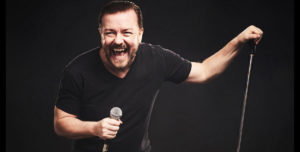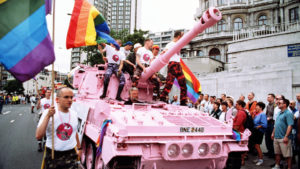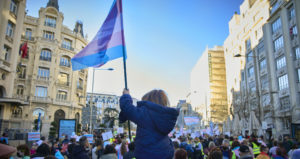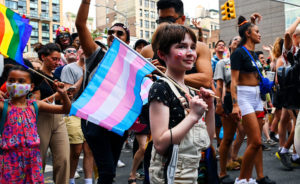One Easter Sunday, many years ago, some friends and I attended a showcase of performances in a network of dank subterranean vaults. The event was self-consciously avant-garde, and many of the artists were drag queens who were exploring the more subversive aspects of their craft. This involved a great deal of screaming, bloodletting and carnal depravity. At one point I wandered into a chamber in which two naked performers were engaged in full penetrative sex. Around them a cluster of middle-class hipsters had formed, pensively observing them as though they were connoisseurs contemplating a Henry Moore.
These days we are accustomed to a somewhat tamed version of drag. But the best performers have always pushed the limits of acceptability: I once appeared at a comedy night at the Edinburgh fringe hosted by a drag queen whose interaction with the punters was not so much waspish as downright libellous. At another, I remember a drag artist smoking liberally during the performance, blowing smoke at a pregnant woman on the front row and saying “I hope you have a miscarriage”. It was a far cry from RuPaul’s Drag Race.
Traditional drag is clearly meant for adults. So what explains the growing enthusiasm for “Drag Queen Story Hour”, in which drag queens visit schools, libraries and other council venues to read to young children? For whatever reason, this bizarre subgenre has been championed by celebrities and politicians who wish to be seen as being on “the right side of history”. Last week the MP for Walthamstow, Stella Creasy, tweeted about taking her infant son to a show in which a drag queen called Greta Tude “put so much energy into story telling and entertaining local children”. Her colleague Nadia Whittome replied, describing the event as “so wholesome”.
But do fans of drag really want it to become “wholesome”? The appeal of drag shows is that they revel in sexual dissidence, as the American drag queen Kitty Demure has pointed out:
“I have no idea why you want drag queens to read books to your children… Would you want a stripper or a porn star to influence your child? It makes no sense at all. A drag queen performs in a nightclub for adults. There is a lot of filth that goes on, a lot of sexual stuff that goes on, and backstage there’s a lot of nudity and sex and drugs. Okay? So I don’t think this is an avenue that you would want your child to explore.”
The sexual element of drag is impossible to deny. Even the more tepid drag queens, whose repertoire extends no further than lip-synching to Donna Summer, tend to interlace their performances with suggestive gestures, provocative quips and the occasional slut-drop.
That’s not to say drag queens can’t adapt to a younger audience — they are actors after all. It’s perfectly possible for performers of Drag Queen Story Hour to read stories to children without all the eroticised preening and pouting we have come to expect from them. But why would any self-respecting artist want to do it? There is something deeply mystifying about drag queens who choose to anaesthetise their art form in order to regale infants with tales of teddy bears and picnics.
While many drag queens are happy to tone it down, others have made little effort to modify their raunchy style for children. It may be that only a handful of performers fall into this category, but all it takes is a few viral videos for parents’ worst fears to be confirmed. Many such clips have appeared on the “Libs of TikTok” Twitter account. The most recent shows a drag queen teaching a small child to dance for tips in Palm Springs, California. A previous video showed a drag show at a club in Dallas attended by children in which the words “It’s Not Gonna Lick Itself!” appeared in large neon lettering on the upstage wall.
It’s not just American parents who are worried: the trend of sexualised children’s shows spread into Britain well before Drag Queen Story Hour. Last year, Redbridge Council commissioned an event at a local library which featured an actor dressed as a bare-bottomed monkey with a large fake penis attached to his crotch. In April, The Family Sex Show — devised by Bristol-based theatre company ThisEgg — was cancelled after parents discovered that it featured full-frontal nudity and content about masturbation, despite being aimed at children as young as five.
Do these artists have no comprehension of the innocence of childhood? If so, they’re not alone. Sex education theorists seeking to transform the curriculum argue that children ought to be taught about sexuality as early as possible. But it can hardly be considered prudish to object to five-year-olds being urged to “try sexual practices” with their “sexual parts”, as the website of The Family Sex Show suggests.
All this explains why drag performers are struggling to convince parents their intentions are benign. Inevitably, many critics have raised safeguarding concerns. Protesters disrupted a Drag Queen Story Hour event at a library in Reading last week, chanting “paedophile” and accusing the performer of “child grooming”. Such accusations are, of course, unfounded and unhelpful. Yet they also speak to the emotive nature of this debate, in which some reckless artists refuse to observe boundaries around children.
In response, library staff have been trained to refer to drag queens as “pantomime dames”, as though they were in any way synonymous. This is misleading, and possibly insulting to the acts, as it strips away the political history of the genre and enervates its impact. There is more to drag than cross-dressing; it is a satirical commentary on gender roles and heterosexual norms, a means to stretch the ambit of decorum. If drag is not transgressive, it ceases to be drag. So why would drag queens sanitise their work?
It is difficult to escape the feeling that all of this is a form of goading, a way to provoke those who are perceived as “conservative” and “reactionary” and to increase the visibility and normalisation of the LGBTQ+ movement. Stonewall recently tweeted a claim that “research suggests that children as young as two recognise their trans identity”. It’s hardly surprising, then, that Drag Queen Story Hour is being interpreted as an extension of Stonewall propaganda.
It’s not just the overt sexuality of some children’s drag shows that is alarming. Drag has long been seen as an excuse for men to mock and fetishise what it means to be female — and has even been compared to black-and-white minstrel shows. Feminists can’t be happy that children are watching men aping extreme stereotypes of womanhood. Surely, it would be prudent for local councils to stay out of this fraught debate?
The organisers of the current UK library tour of Drag Queen Story Hour say they want to “show the world that being different is not a bad thing, and by providing imaginative role models for children to look up to, we can change the world book by book!” While it is not uncommon for children’s stories to convey a moral message, it does seem strange that so many drag queens are keen to undertake a pedagogic role that, in contrast to their typically bacchanalian late-night productions, must seem somewhat insipid.
Drag delights in the smashing of taboos. There are many genres and art forms that can be sanitised for a younger audience, but drag has at its heart a lascivious energy, a fuck-you attitude to societal norms. If you strip away all that to make it age-appropriate, what is left? Just a man in a dress. And Widow Twankey already has that covered.
Disclaimer
Some of the posts we share are controversial and we do not necessarily agree with them in the whole extend. Sometimes we agree with the content or part of it but we do not agree with the narration or language. Nevertheless we find them somehow interesting, valuable and/or informative or we share them, because we strongly believe in freedom of speech, free press and journalism. We strongly encourage you to have a critical approach to all the content, do your own research and analysis to build your own opinion.
We would be glad to have your feedback.
Source: UnHerd Read the original article here: https://unherd.com/





